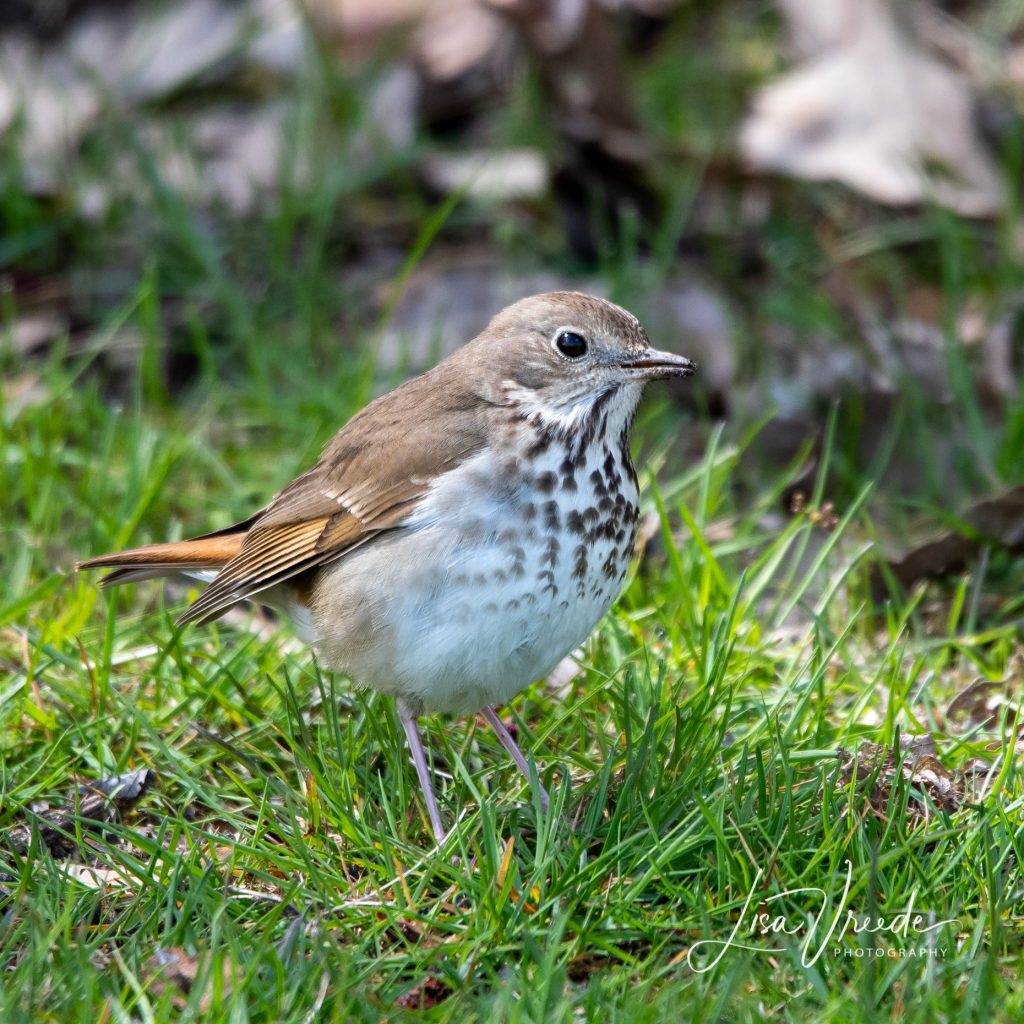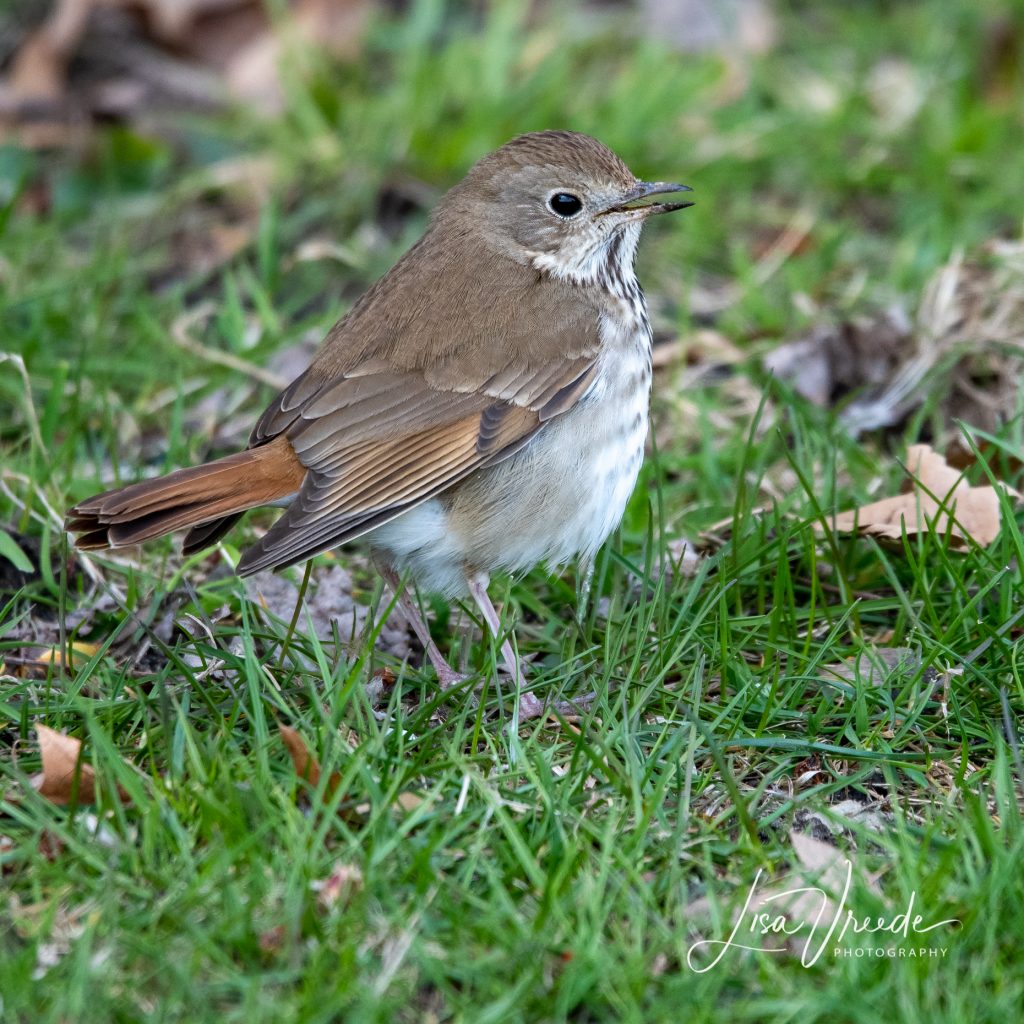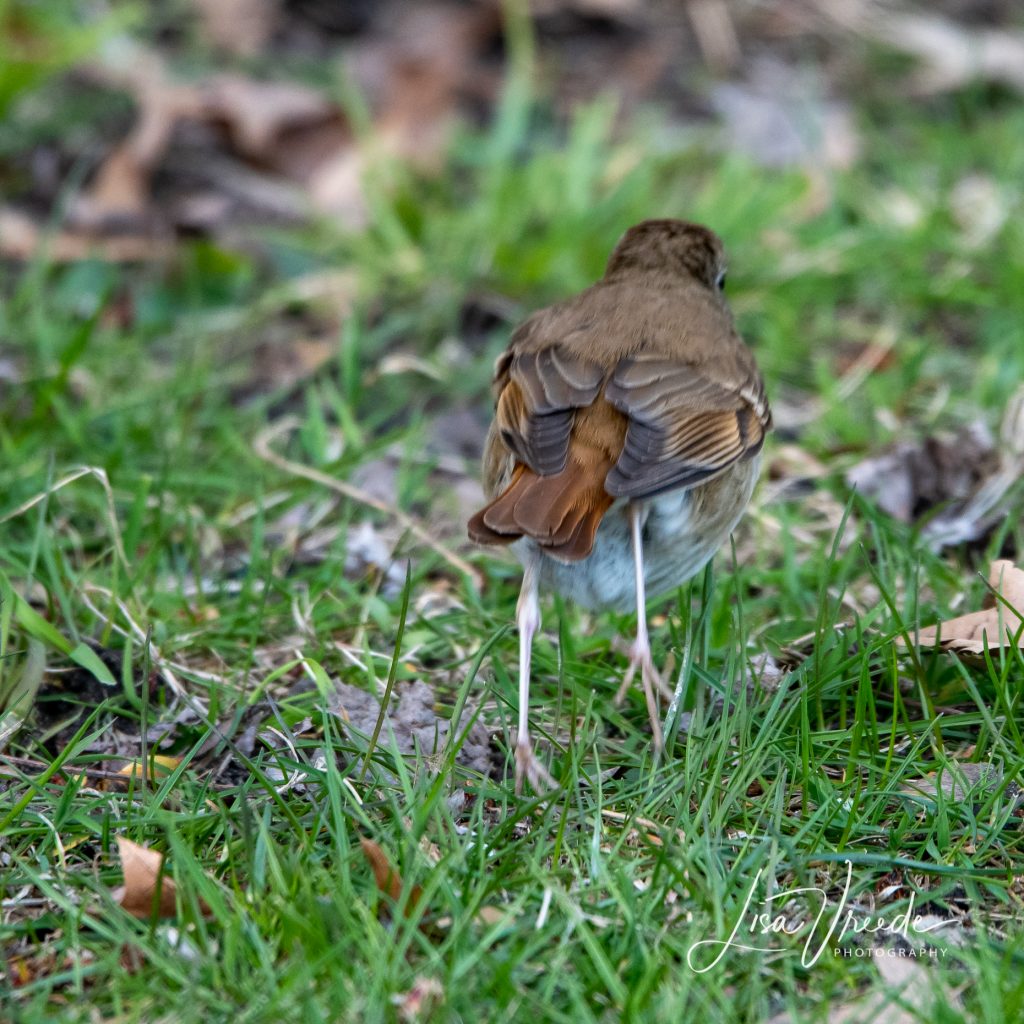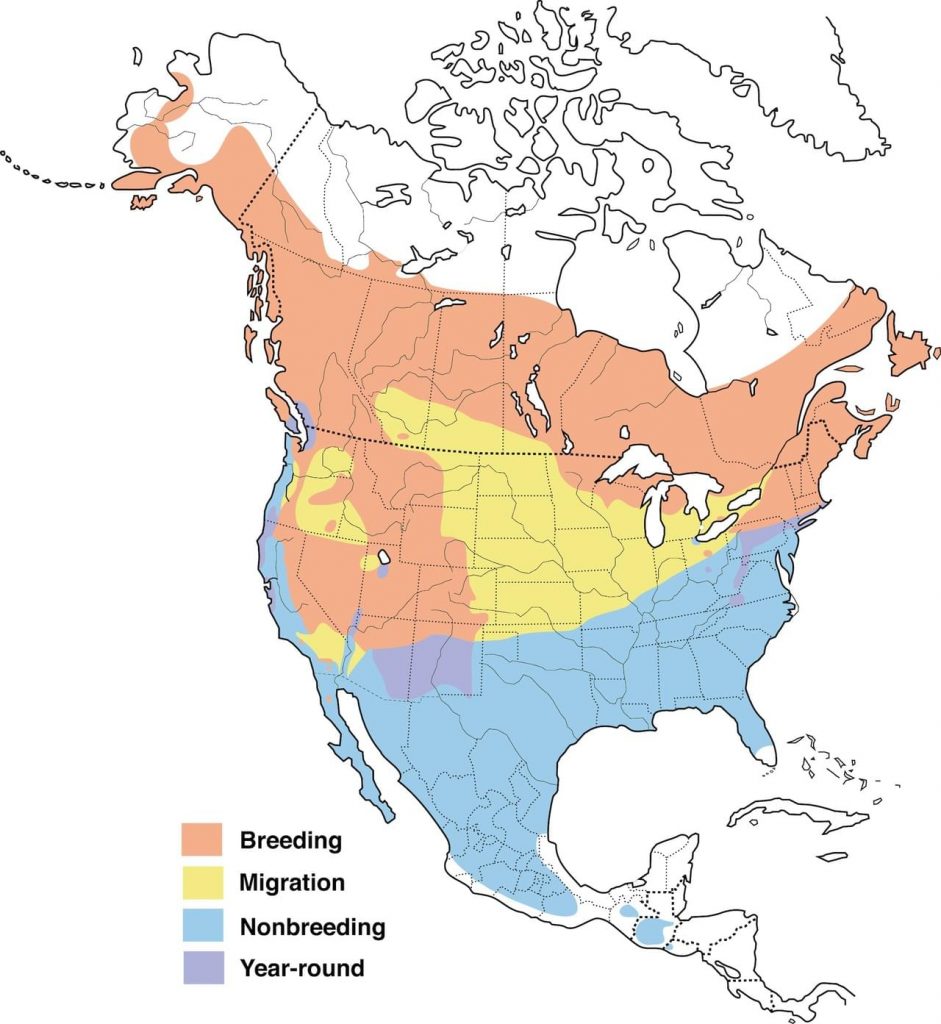One of our early migrants has been spotted by many customers with excitement – Hermit Thrush. Other than the thrushes that we readily recognize, the American Robin and the Eastern Bluebird, there are a group of thrushes that can look quite similar. Here are some tips as to how to tell this one apart from the remaining thrushes in the Genus Catharus.

First off, it is the thrush that arrives the earliest so in late April, if you are seeing a thrush, chances are it is a Hermit Thrush. Why is that? Because it is the only thrush that winters in the United States, which means it has less of a distance to migrate and therefore, arrives on breeding grounds first. The other thrushes of this genus all spend winters in Central and South America.
Notice the reddish tail and the reddish tips of the wings. No other Catharus Thrush has these field marks. The chest of a Hermit Thrush has bold, black spots. In poor light conditions, the whiteness of the chest will stand out. Also look for the narrow but complete eye ring on Hermit Thrush.

As you watch its behavior, observe how it will quickly raise and slowly lower its tail, another field mark. Hermit thrushes also habitually rapidly flick their wings as they jerk their tail. As well, the Hermit Thrush will also stand with its’ tail held in a slightly upright posture.
Watching this bird feed can be quite entertaining. It moves with energetic, springy hops and then a pause, similar to a hopping Robin yet faster. The Hermit Thrush may often fly up to capture prey. If you see this thrush feeding in the lower portion of trees, it moves by hopping from branch to branch in search of insects and berries. After each time that it alights, it will often mark each relocation with that characteristic jerk up and then lowering of the tail. Hermit Thrushes search leaf litter (another important reason to Leave the Leaves) for insects such as beetles, caterpillars, bees, ants, wasps and flies. They may also eat small amphibians and reptiles.

Thrushes are known for their amazing songs. Hermit Thrush is no exception. As described by David Allen Sibley, the song is “ethereal, fluting, without clear rising or falling trend; begins with a long whistle followed by two or three higher twirling phrases fading at the end”.
If you are lucky enough to see this bird in its’ breeding habitat, perhaps you will have the pleasure of hearing its’ song. Hermit Thrushes prefer drier, more open under-story forests and the edges of forests as opposed to the interiors.
Many thanks to Lisa Vreede for her outstanding photographs of this Hermit Thrush.
Enjoy your birds!

